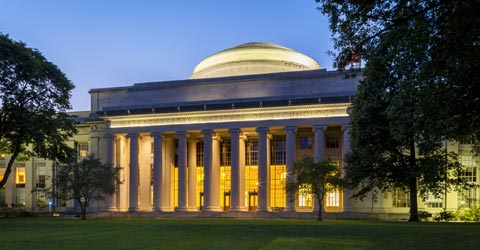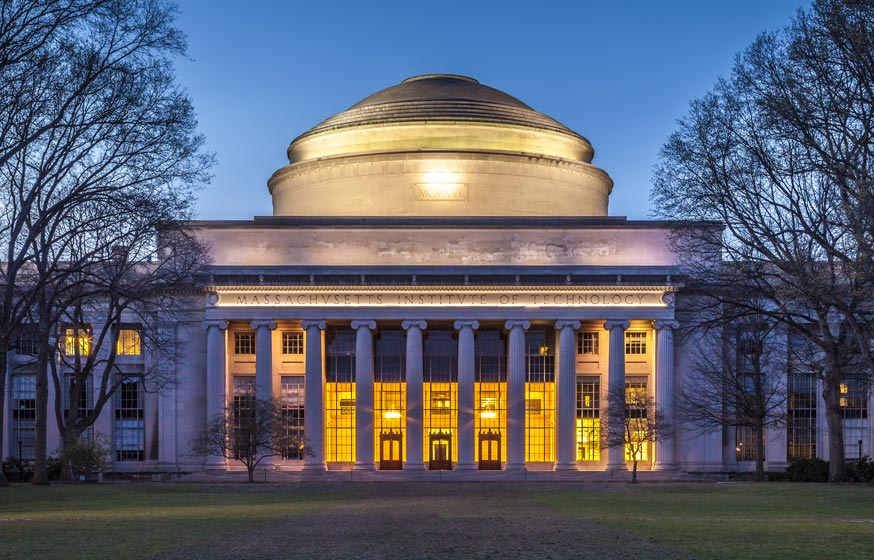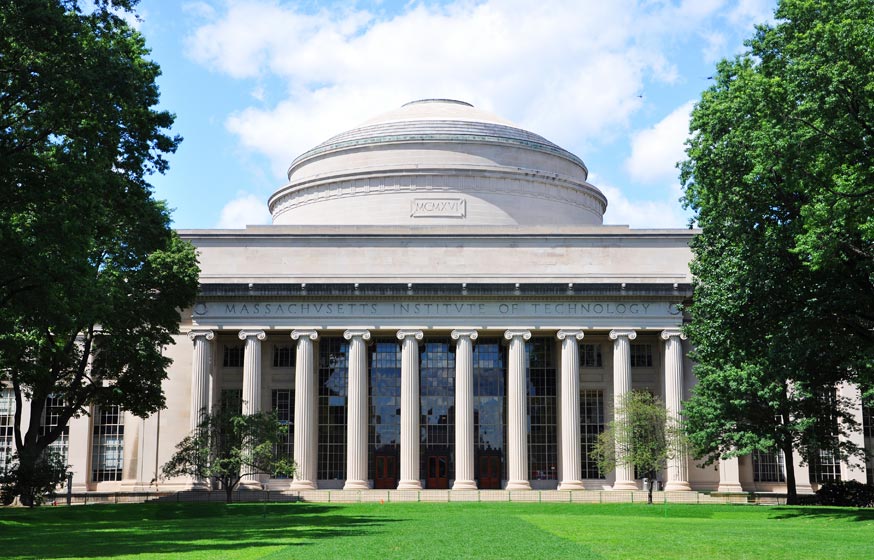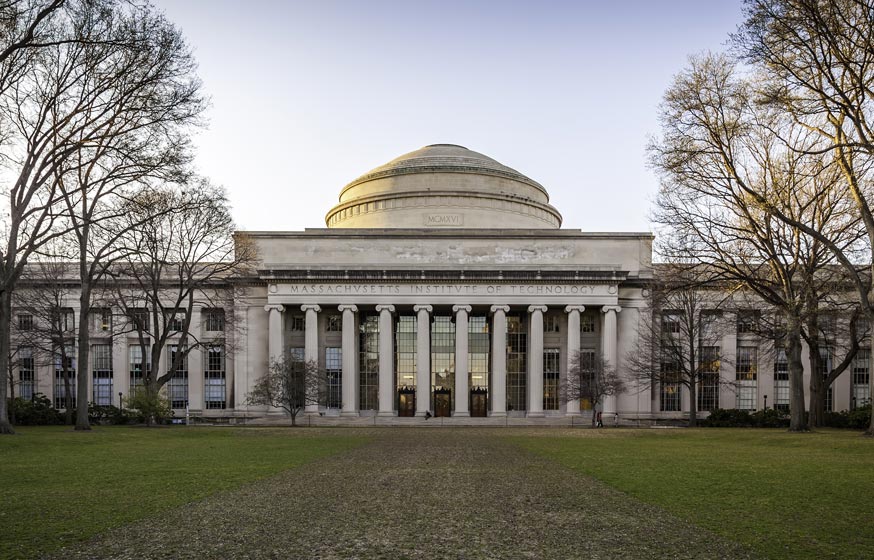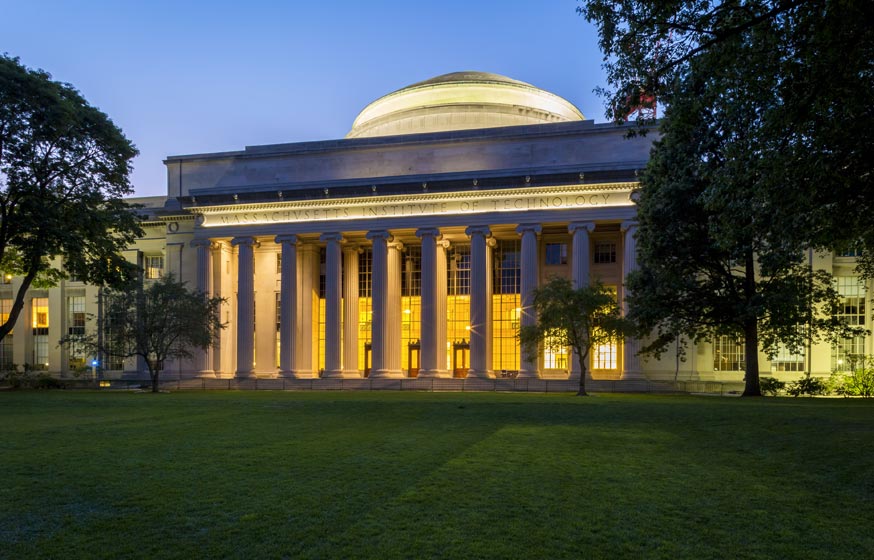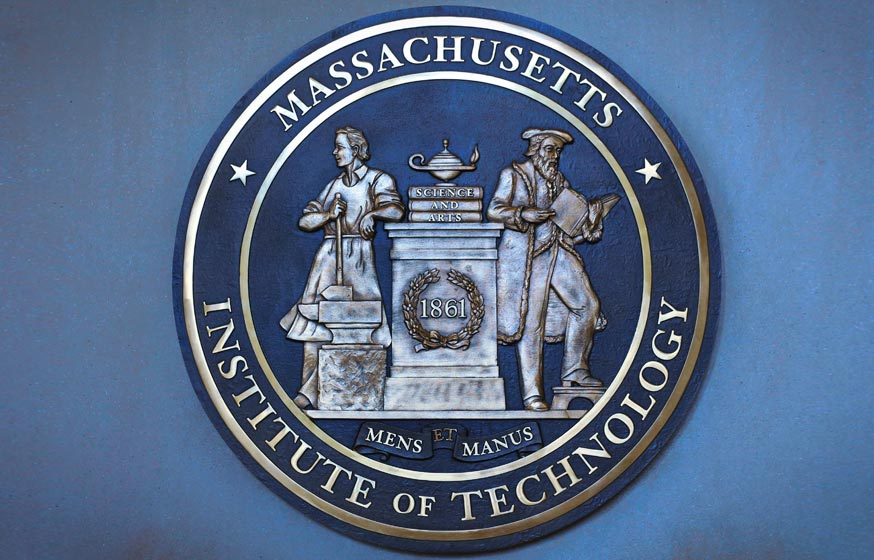Get Matched With Online Colleges
Massachusetts Institute of Technology, or MIT as it’s better known, focuses the most on technology subjects, such as engineering or math. However, it also offers plenty of other non-technology majors. MIT is located in Cambridge rather than Boston. While the two communities are close to each other, Cambridge is separated from Boston by a small body of water. However, students have options of various areas in both Cambridge and Boston to explore when they have the free time including the Paul Revere House, Powder House Square, Harvard Square, Boston Common, and museums. Fenway Park is also close by meaning that, if students want to watch a baseball game, they can.
Search All Programs
Overview of Massachusetts Institute of Technology
MIT is classified as a private, not-for-profit university set within a midsize city. The school was founded in 1861, well after the founding of Harvard University. Among other doctoral universities, MIT holds a Carnegie classification of “very high research activity”. High school graduates who took AP classes and passed their exams can receive credits for each exam they passed.
MIT holds an institutional accreditation from the New England Commission of Higher Education and it has been accredited since December 1, 1929.
General Information
| School Type | Private not-for-profit |
|---|---|
| Campus Setting | City: Midsize |
| Campus Housing | Yes |
| Student Faculty Ratio | 3:1 |
| Graduation Rate | 94% |
| Year Founded | 1861 |
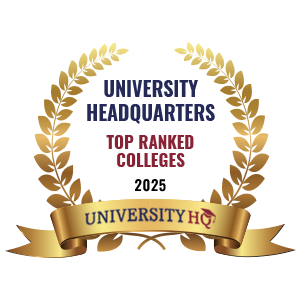
Student Enrollment
Total Students11,574
4,602
6,972
Undergraduate Student
Male 2,485
Female 2,117
Graduate Student
Male 3,765
Female 3,207
Explore Map
Top Rankings For Massachusetts Institute of Technology
Admissions
APPLICATION21,706
ACCEPTANCE1,519
Acceptance Rate7%
Enrollment 1,155
| Admissions | |
|---|---|
| Application Fee | $75 |
| High School GPA | Recommended |
| High School Rank | - |
| High School Transcripts | Required |
| College Prep Courses | Recommended |
| Recommendations | Required |
| SAT/ACT | Required |
| TOEFL (Test of English as a Foreign Language) | Recommended |
| Application Deadline | January 1 |
| Common Application Accepted | No |
Tuition Cost & Financial Aid
MIT’s tuition is not inexpensive. In a recent academic year, tuition and fees were $53,790 and student’s books averaged $820. The average net price is the cost remaining after all financial aid has been applied to the full balance: at MIT, this is $18,971.
Financial aid helps families to cover the cost of attendance at MIT - this can take a hefty bite out of a family’s budget.
- Families who earn up to $30,000, the average net price is $7,581
- Families whose income falls between $30,001 and $48,000, the average net price is $3,343
- Families whose income falls between $48,001 and $75,000, the average net price is $3,938
- Families whose income falls between $75,001 and $110,000, the average net price is $9,303
- Families who earn more than $110,001, the average net price is $40,757
Freshmen who received grants or scholarships numbered at 662 or 60%; they received about $48,459. Students receiving institutional grants and scholarships numbered about 656 or 60%; they received $46,080.
| Average net price | 2017-2018 |
|---|---|
| Net Price | $18,971 |
| Average Total Aid | $48,459 |
| Students Receiving Financial Aid | 73% |
| Room & Board | $16,390 |
Sticker Price
- Tuition In-State - $53,790
- Tuition Out-of-State - $53,790
- Books and Supplies - $820
- Room & Board - $16,390
- Other - $2,160
Academics
The retention rate of freshman students is 99%, meaning that almost 100% of the entire freshman class will return to the same school in the next semester. The 4-year graduation rate is 85%; because some degree programs are more challenging than others, some students extend their time in school, graduating in six years; the 6-year graduation rate is 94%.
The student-to-faculty ratio is 3 to 1; this is an excellent ratio since students will be more easily able to reach their professors for assistance with their studies. The student population is 11,500+; undergraduate students make up 40% of the student body with around 4,600 students; graduate students comprise 60% of the student body with nearly 7,000 students.
MIT does not offer evening classes for students unable to attend classes during the day. However, it does offer distance learning, online classes, which enables these students to take their courses when they can so that they will be able to earn a degree. Popular degree programs at MIT include architecture and related services; business, marketing, management and related support services; computer and information sciences and support services; and engineering.
Retention
Rate
4 year
Graduation
Rate
6 year
Graduation
Rate
Student Population Total
Student Population 11,574
4,602
6,972
Most Popular Programs & Majors
(# of Diplomas Awarded by Subject)
| All Engineering Majors | 443 Total Graduates / 39% |
|---|---|
| Mechanical Engineering | 182 Graduates |
| Electrical and Electronics Engineering | 50 Graduates |
| Aerospace, Aeronautical and Astronautical/Space Engineering | 46 Graduates |
| Bioengineering and Biomedical Engineering | 46 Graduates |
| Materials Engineering | 39 Graduates |
| All Computer Information Science Majors | 371 Total Graduates / 32% |
| Computer Science | 371 Graduates |
| All Physical Science Majors | 84 Total Graduates / 7% |
| Physics, General | 67 Graduates |
| Chemistry, General | 15 Graduates |
| Geology/Earth Science, General | 2 Graduates |
| Mathematics and Statistics | 80 Total Graduates / 7% |
| Mathematics, General | 69 Graduates |
| Financial Mathematics | 11 Graduates |
| All Biological & Biomedical Majors | 59 Total Graduates / 5% |
| Computational Biology | 22 Graduates |
| Biology/Biological Sciences, General | 19 Graduates |
| Neuroscience | 18 Graduates |
| All Other Diplomas | 9% |
Outcome & Salary
Graduating from MIT often means that graduates earn good salaries. The average salary for an MIT graduate is $110,000, their early-career salary is $86,300, their mid-career salary rises to $155,200. This means they earn an excellent return on investment (ROI). Though the cost of education at MIT sits around $75,884, keep in mind that, within 10 years, MIT graduates will realize an ROI that is slightly more than $1,000,000—$1,024,156, to be precise. Their 20-year projected ROI is $2,576,116.
Students who choose not to go to college after high school earn a national average salary of $37,960. Their 10-year projected income is $379,600 and their 20-year projected income is $759,200.
| Graduates Salary | |
|---|---|
| College Grads Early Career Salary | $86,300 |
| College Grads Average Salary | $110,000 |
| College Grads Mid Career Salary | $155,200 |
| Return on Investment (ROI) | |
|---|---|
| 10 Year Salary Earnings Potential | $1,100,000 |
| 20 Year Salary Earnings Potential | $2,652,000 |
| Cost of Education (Net Price) 4 Year | $75,884 |
| 10 Year Projected ROI | $1,024,116 |
| 20 Year Projected ROI | $2,576,116 |
| No Colleage Education Salary Comparison | |
|---|---|
| National Average Salary | $37,960 |
| 10 Year Projected Income | $379,600 |
| 20 Year Projected Income | $759,200 |
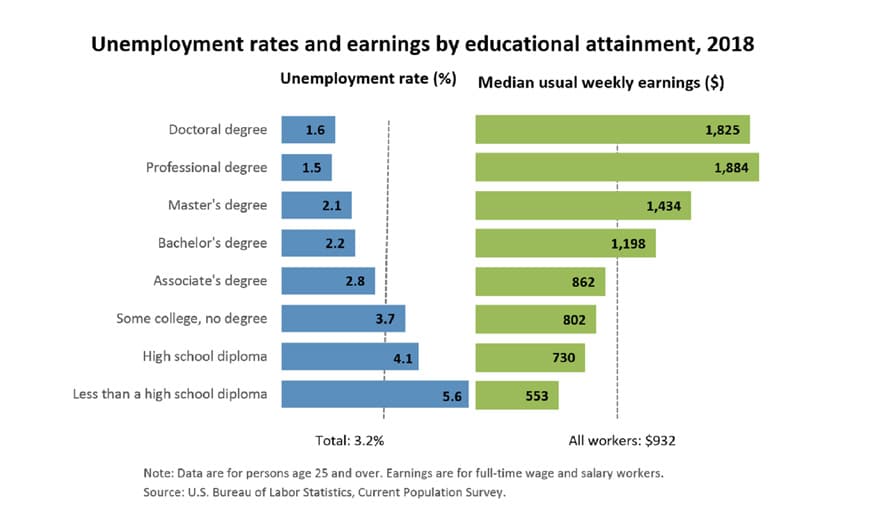
Related Top College Resources

















